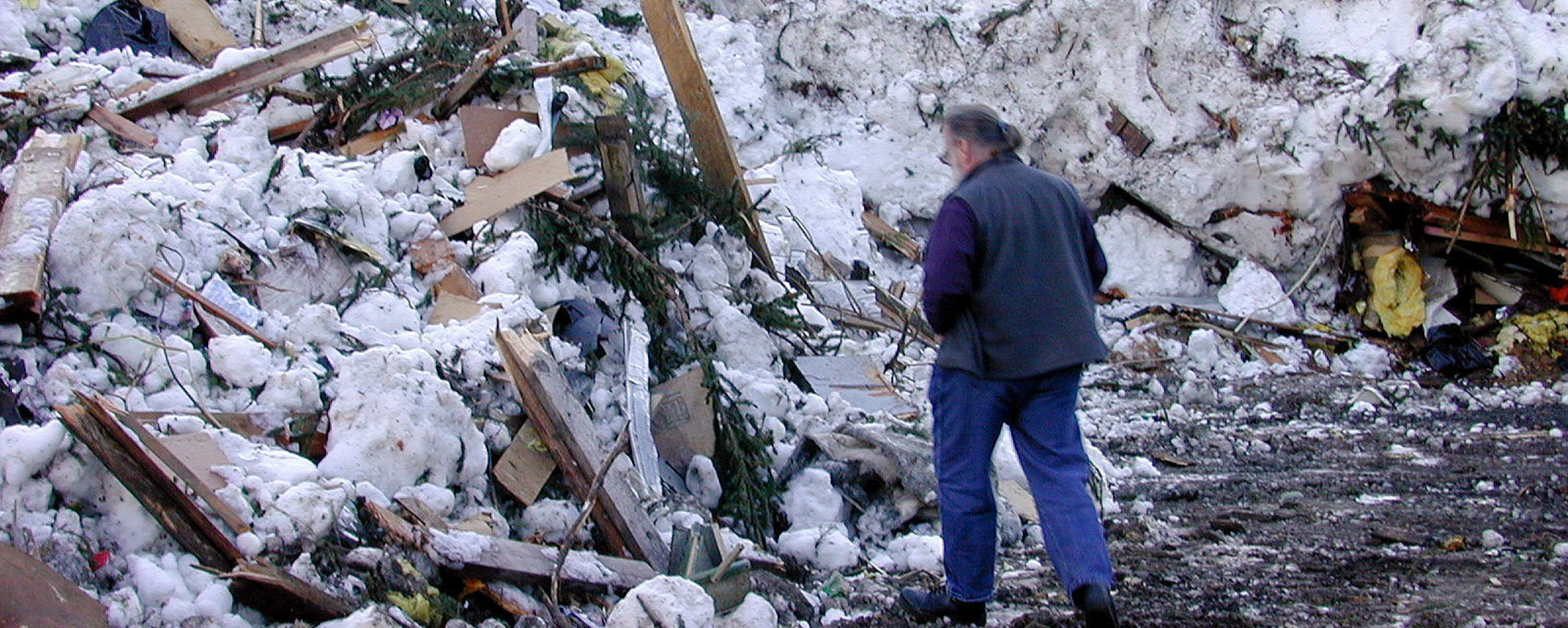Protect Yourself
During an Avalanche
After an Avalanche
Additional Resources

If you are a disaster survivor, please visit FEMA.gov for up-to-date information on current disaster declarations. If you have questions about your disaster assistance application, visit disasterassistance.gov, use the FEMA mobile app or call (800) 621-3362.
An avalanche is a large amount of snow moving quickly down a mountain, typically on slopes of 30 to 45 degrees. When an avalanche stops, the snow becomes solid like concrete and people are unable to dig out. People caught in avalanches can die from suffocation, trauma or hypothermia.
Avalanches can:

Be caused by people, new snow and wind.

Move at speeds of 60 to 80 MPH.

Peak during the period of December through March.
How to Protect Yourself from an Avalanche
The most important actions you can take to survive an avalanche are done before it happens.
Know Your Avalanche Risk
Learn about your local avalanche risk. Know the signs of increased danger, including recent avalanches and shooting cracks across slopes. Avoid areas of increased risk, such as slopes steeper than 30 degrees or areas under steep slopes. Get training on how to recognize hazardous conditions and avalanche-prone locations. Sign up for alerts from a U.S. Forest Service Avalanche Center near you. Your community may also have a local warning system.
Preparing for Avalanche
Get proper equipment to protect yourself from head injuries and create air pockets. Receive first aid training so you can recognize and treat suffocation, hypothermia, traumatic injury and shock. Wear a helmet to help reduce head injuries and create air pockets. Wear an avalanche beacon to help rescuers locate you. Use an avalanche airbag that may help you from being completely buried. Carry a collapsible avalanche probe and a small shovel to help rescue others.
Signs of Avalanche
Learn the signs of an avalanche, and how to use safety and rescue equipment.
Follow avalanche warnings on roads. Roads may be closed, or vehicles may be advised not to stop on the roadside.
Stay Safe During an Avalanche

- Use and carry safety equipment and rescue gear.
- If your partner or others are buried, call 9-1-1 and then begin to search if it is safe to do so.
- If you have the proper training, treat others for suffocation, hypothermia, traumatic injury or shock.
Returning After an Avalanche
Know the signs and ways to treat hypothermia.
- Hypothermia is an unusually low body temperature. A body temperature below 95 degrees is an emergency.
- Signs: Shivering, exhaustion, confusion, fumbling hands, memory loss, slurred speech and drowsiness.
- Actions: Go to a warm room or shelter. Warm the center of the body first—chest, neck, head and groin. Keep the person dry and wrapped up in warm blankets, including the head and neck.
- Engage virtually with your community through video and phone calls. Know that it’s normal to feel anxious or stressed. Take care of your body and talk to someone if you are feeling upset.


